What does “ERROR” mean on my Kenwood Receiver?
- KKristen ParkerSep 7, 2025
If your Kenwood Receiver displays “ERROR”, try the operation again. If the error persists, check if the device supports the function you are attempting to use.
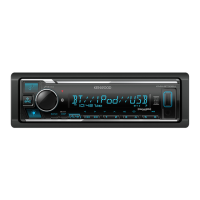
What does “ERROR” mean on my Kenwood Receiver?
If your Kenwood Receiver displays “ERROR”, try the operation again. If the error persists, check if the device supports the function you are attempting to use.
Why is my Kenwood Receiver not able to connect or reconnect to the Alexa mobile application?
If you are unable to connect or reconnect to the Alexa mobile application with your Kenwood Receiver, ensure the audio device is connected via Bluetooth. Also, select the audio device from [AUDIO SELECT] in [BT MODE].
Why is my Kenwood KMM-BT332U Receiver not able to go to “LISTENING” screen after activating Alexa?
If your Kenwood Receiver is not able to go to the “LISTENING” screen after activating Alexa, disconnect and reconnect the Alexa connection again. Alternatively, turn off the unit for about 10 seconds, then turn it back on and try again.
What to do if my Kenwood Receiver displays “USB HUB IS NOT SUPPORTED”?
If your Kenwood Receiver displays “USB HUB IS NOT SUPPORTED”, note that the unit cannot support a USB device connected via a USB hub.
Why are correct characters not displayed on my Kenwood KMM-BT332U Receiver?
The Kenwood Receiver can only display uppercase letters, numbers, and a limited number of symbols. Depending on the selected display language, some characters may not be displayed correctly.
What does “CH LOCKED LOCK CODE?” mean on my Kenwood Receiver?
If your Kenwood Receiver displays “CH LOCKED LOCK CODE?”, it means the selected channel is locked. Enter the correct pass code to unlock it.
| Tuner Type | AM/FM |
|---|---|
| Bluetooth | Yes |
| Max Power Output | 50 watts x 4 channels |
| RMS Power Output | 22 watts x 4 channels |
| Built-in Equalizer | 13-band |
| DIN Size | Single DIN |
| MP3 Playback | Yes |
| WMA Playback | Yes |
| FLAC Playback | Yes |
| ID3 Tag Display | Yes |
| USB Input | Yes |
| Auxiliary Input | Yes, Front |
| Display Type | LCD |
| Steering Wheel Control | Yes (with adapter) |
| Dimensions | 178mm x 50mm x 159mm (W x H x D) |
Declaration of compliance with industry standards.
FCC regulations and potential interference.
Industry Canada regulations and potential interference.
Terms for using embedded software.
User rights and limitations for software use.
Conditions for transferring software license.
Copyright and permission for jansson software.
Copyright and permission for CJSON software.
Copyright and permission for nanopb software.
Essential safety warnings and general advice before use.
Diagram and labels for the unit's faceplate.
Setting display language and disabling demo mode.
Configuring the unit's time and date settings.
Adjusting various optional unit settings.
How to find and save radio stations.
Adjusting tuner settings and features.
Procedures for connecting external media devices.
Controls for playing music from USB/iPod.
Selecting and managing music sources on USB.
Configuring iPod/iPhone connection type.
Methods for choosing and finding audio files.
Advanced search features for USB audio files.
Connecting tuner and activating subscription.
Tuning into and controlling SiriusXM stations.
Managing content restrictions for SiriusXM.
Switching modes and managing channels.
Using advanced SiriusXM listening features.
Previewing songs with the TuneScan feature.
Adjusting various SiriusXM settings.
Connecting and listening via AUX input.
Installing and configuring the remote app.
Configuring the remote application connection.
Overview of Bluetooth profiles and codecs.
Installing and connecting the external microphone.
Initial setup for Bluetooth pairing.
Automatic pairing and basic phone functions.
Handling incoming calls via Bluetooth.
Optimizing microphone and call audio quality.
Configuring automatic call answering.
Initiating calls using phonebook or dialer.
Using voice commands and saving contacts.
Configuring various Bluetooth operational modes.
Resetting and testing Bluetooth connectivity.
Connecting and playing audio via Bluetooth.
Preparing and configuring Alexa for first use.
Setting up Alexa via direct link or manual pairing.
Interacting with Alexa through the unit.
Controlling Alexa's microphone and listening states.
Customizing sound profiles with EQ settings.
Adjusting subwoofer, bass, treble, and balance.
Applying sound effects and configuring speaker crossovers.
Optimizing sound staging with delay settings.
Configuring settings based on vehicle type.
Setting colors and brightness for display zones.
Adjusting display text scroll and clock.
Fine-tuning display colors and brightness levels.
Managing demo mode and other display features.
Important safety warnings for installation.
Overview of unit installation steps.
Guide to connecting unit wiring harnesses.
Detailed steps for in-dash mounting.
Steps for installing without a sleeve.
Connecting accessories like tuners and microphones.
Procedure for detaching the unit.
Diagram and explanation of wiring connections.
How to clean and maintain the unit.
Links for firmware, applications, and more.
Information on supported file types and USB devices.
Details on iPod/iPhone compatibility and Alexa.
Information on radio program types and display colors.
Customizing information shown on the display.
Solutions for common unit and radio problems.
Solutions for USB and iPod connectivity issues.
Solutions for SiriusXM reception and channel issues.
Solutions for Bluetooth pairing and call issues.
Solutions for Alexa voice command and connection problems.
Resolving Alexa connection and response issues.
Technical details for tuner and USB interfaces.
Technical details for Bluetooth, AUX, and audio output.
Overall unit dimensions, power, and weight.
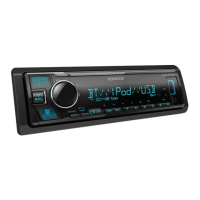
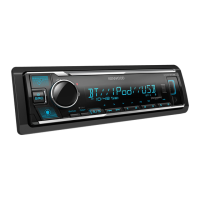
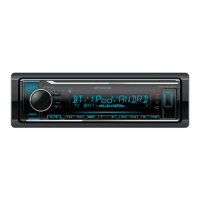
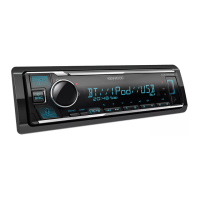
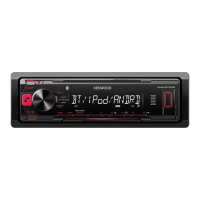



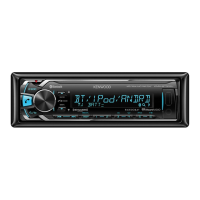

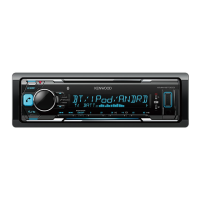
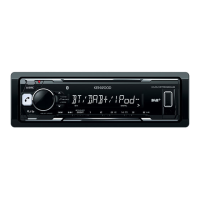
